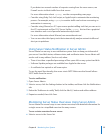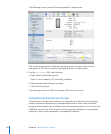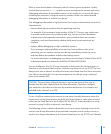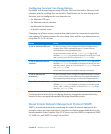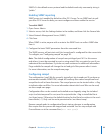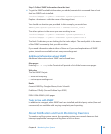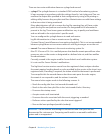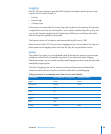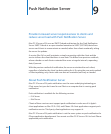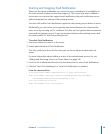
Chapter 8 Monitoring Your System 183
Step 3: Collect SNMP information from the host
To get the SNMP-available information you added, execute this command from a host m
that has SNMP tools installed:
/usr/bin/snmpget -c public <hostname> system.sysLocation.0
Replace <hostname> with the name of the target host.
You should see location you provided. In this example, you would see:
SNMPv2_MIB::system.sysLocation.0 = STRING:\"server_room\"
The other options in the menu you were working in are:
/usr/bin/snmpget -c public <hostname> system.sysContact.0
/usr/bin/snmpget -c public <hostname> system.sysServices.0
The nal .0 indicates you are looking for the index object. The word public is the name
of the SNMP community that you did not alter.
If you need information about either of these or if you need explanations of SNMP
syntax, tutorials are available at net-snmp.sourceforge.net.
Additional Information about SNMP
Additional information about SNMP can be found here.
Man pages
Entering man -k snmp in the Terminal will provide a list of the known man pages.
Web sites
The Net SNMP-Project:
 www.net-snmp.org
 net-snmp.sourceforge.net
Books
Essential SNMP by Douglas Mauro, Kevin Schmidt
Publisher: O’Reilly (Second Edition Sept 2005)
ISBN: 0-596-00840-6, 460 pages
Tools to Use with SNMP
In addition to snmpget, other SNMP tools are installed, and third-party suites (free and
commercial) are available with varying complexity and reporting.
About Notication and Event Monitoring Daemons
To monitor and log system events, the operating system runs several daemons that
intercept application messages and log them or act on them.



